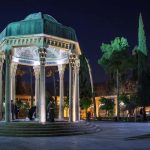Persia, the misrepresented empire
For many people, Persia seems like a somewhat familiar concept! However, it seemingly fails to evoke anything other than the carpet, the cat, and caviar, or bold, bejewelled men riding elephants if Hollywood is your only source of knowledge! Even though the Persians succeeded in establishing one of the mightiest empires of the ancient world, they seem to provoke anything of actual value. There appears to be a deliberate act to diminish the influence of the Persian Empire on human history and civilization.
For centuries the Persians have been denigrated and lampooned by the West, portrayed in a range of disparaging manners from camp to savage, tyrannical, and debauch. For a long while, the West has found pleasure in dehumanizing the Persians through exaggerated and grotesque depictions. Contrary to what historical records show, it seems the Western media can’t help but indulge in the worn-out narrative of a civilized West against a savage East.
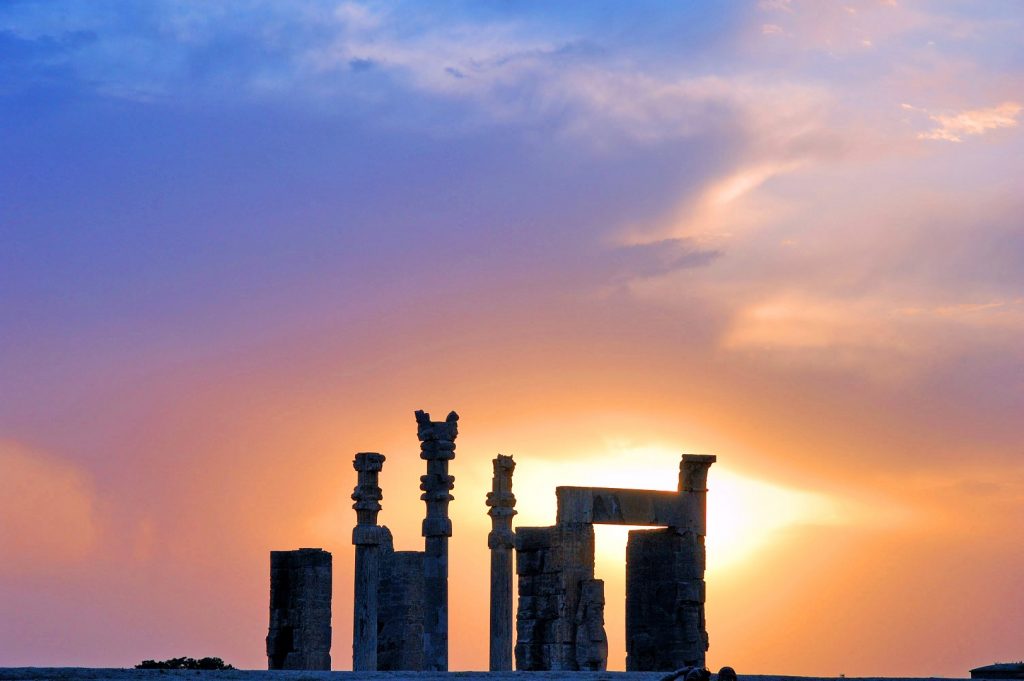
But it’s hard to believe that such barbaric and uncivilized people could rule over much of the ancient world for over a millennium, creating a tolerant, flourishing, and prosperous empire. It’s quite disheartening how some historical sources systematically undermine Persian contributions to world culture and civilization.
Sadly, the Persians followed an oral tradition of conveying history and literature up to the Sassanid era. Therefore, much of their history was told through Greek sources, which can hardly be relied upon for impartiality. The Greeks’ language and hostility towards Persians were influential in establishing the long-standing narrative of a democratic Us against a totalitarian Them.
In the 19th century, a new theory rooted European civilization in ancient Greece. It implied The Greeks had invented all that was moral in the world, and these values were later spread across Europe by the Romans. The Greeks and the Romans then had to constantly fight off the Persians, who were considered a genuine threat to Western values of freedom and democracy. Going by these accounts, one would think the Persians existed solely to fulfil the Greeks’ feelings of righteousness and self-importance.
However, archaeological excavations in the 1920s and 30s painted a very different picture of the Persians’ true power, vision, value, and legacy. Contrary to what the West would like to believe, the Persian Empire has overwhelmingly influenced modern societies. It embodies much of European ideals, such as human rights, tolerance, freedom of expression, and equal rights for women.
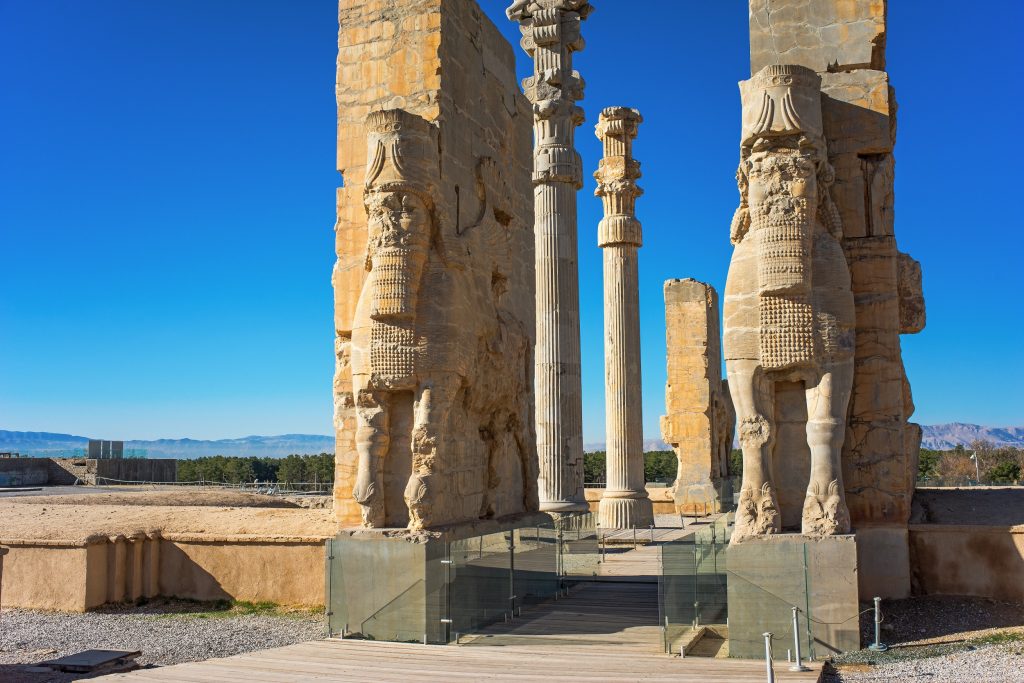
Contrary to Western claims, the Persian culture was as elegant and sophisticated as that of its Western neighbours and profoundly impacted the arts and traditions of the ancient world. Despite their rivalries and recurring clashes, the Persians, Greeks, and Romans continuously engaged and interacted, greatly influencing each other’s cultures and arts.
It seems the disparaging narratives put out by the Greeks were more of an attempt to alleviate centuries of fear and wounds inflicted by the Persians. Through this narrative, the Greeks attempted to constantly reassert their identity as bearers of democracy and moral dignity against an ever-present superpower that harboured unabating ambitions.
Based on archaeological findings and accurate historical records, we set out to correct this flawed narrative and introduce you to the real Persian Empire, its values, achievements, and heritage.
The land of the free man
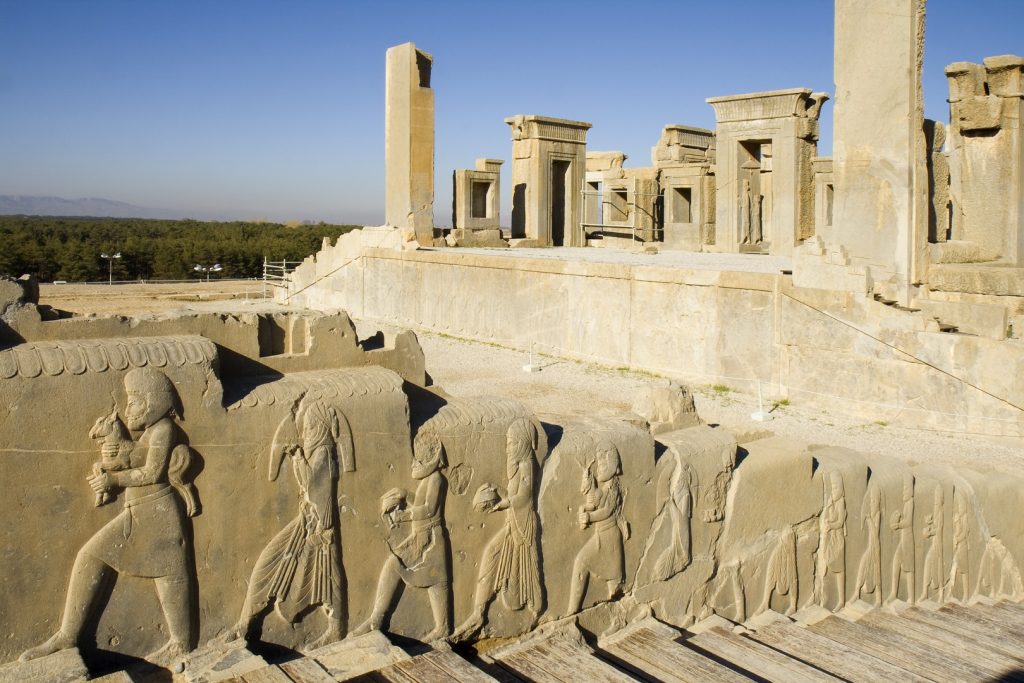
Persians are the ancient inhabitants of modern-day Iran who migrated to the region in the late second millennium BCE. The term Persis was used by Greek and Roman historians to refer to the entire inhabitants of the Iranian Plateau and remained in use by the Western world to refer to Iran until a few decades ago. However, the Persians themselves referred to their mighty empire as Eran or Irania – the land of the Aryans. Aryan, which means noble, was used to refer to the first tribe that settled in the region, and it applied to a specific class of people rather than a particular race or nationality.
The Persian Empire emerged in 550 BCE under the rule of Cyrus the Great, uniting Persians and the Medes into a dominant state. Spanning over a millennium, the empire oversaw three major dynasties; the Achaemenes, the Parthians, and the Sassanid. At its height, the Persian Empire stretched from Turkey to Central Asia, Northern India, and Egypt. Within a single generation, this mighty empire became a meeting place for various cultures, ethnicities, and religions of the
ancient world. Their political and cultural influence dominated Western Asia and beyond for more than a thousand years, leaving a lasting mark on cultural development.
As one of the most advanced civilizations, the Persians made many contributions to the arts and sciences. Many of the notions, customs, and systems we use today were, in fact, an invention of the Persians. Concepts such as human rights, taxation, postal service, administration, customs such as daily teatime, birthday celebrations, and Christmas, and technologies such as refrigerators and air conditioning have all emerged from the Persian civilization.
“I permitted all to dwell in peace”
Human rights are often considered an invention of the West! But the concept was first conceived in the 6th century BCE in Western Asia. In October 539 BCE, Cyrus and his liberating army marched through Babylon and, in his words, “removed the shameful yoke from the people of Babylon.” His accounts of the conquest were inscribed on a clay cylinder known as the Cyrus Cylinder. Considered by many scholars as the first charter of human rights, the ancient script is a vivid proclamation of Cyrus’ cultural and political views.
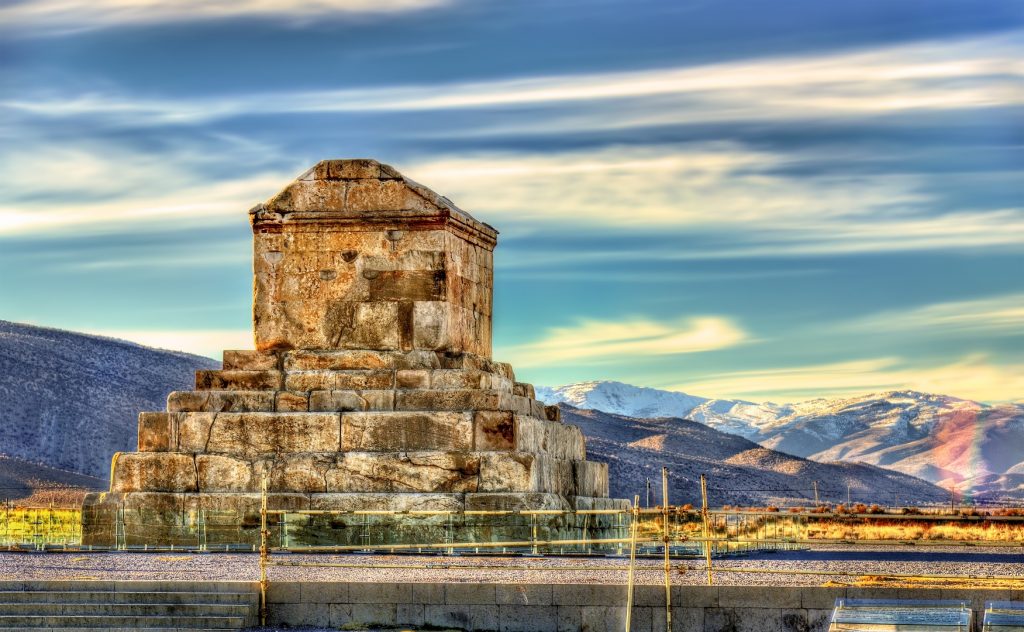
Cyrus allowed all subjects of the conquered lands to freely practice their faith and customs in peace and under local rule. His unparalleled tolerance towards other religions and ethnicities became the cornerstone of the empire and was adopted by subsequent Persian rulers. Vispanda – or many people– became the guiding concept throughout the Persian empire, creating a culture of interconnectedness that allowed Persians to adopt an awareness and acceptance of different cultures and ways of life within the realm.
This openness towards other faiths and cultures not only allowed for a rich and dynamic culture, but the diversity of skills and capacities also benefited the empire in terms of infrastructure and administration. This also helped Persians maintain effective rule over a multi-ethnic empire of unprecedented size and complexity.
Women’s rights, a step backwards
Women’s rights have been at the forefront of modern social and political dialogue for decades. For centuries women have fought to be viewed as equals to men. But for over a millennium, women’s rights were never an issue in one part of the world. Until the Islamic conquest of Persia, women of the Empire were given the same standing as men, enjoying full autonomy and control over their lives.
Under the influence of Zoroastrian teachings, Persian men and women were considered equals, and their relationship was defined by companionship and partnership rather than subordination and dominance. Every February, celebrating the festival of Sepandarmazgan, women across the Persian Empire were honoured with lavish gifts and festivities, highlighting the importance of their role within the community.
The clay tablets unearthed in Persepolis paint a detailed picture of women’s role in the Empire, and it substantiates the level of autonomy and influence they enjoyed. Within various social classes, women were guaranteed individual liberty. Both free and servants were protected by the law and were entitled to fair treatment, safety and equality.

Unlike their Greek and Roman counterparts, Persian women enjoyed equal status to men; they had full rights to ownership, inheritance, equal pay, and education and could not be forced into marriage. Women rarely faced discrimination and were allowed to take up a trade and manage their own businesses, occupy government posts, enter the army and move up the ranks despite their gender.
Royal women also played a crucial role in the affairs of the Empire. They were present during royal audiences, participated in state banquets and accompanied the king on royal trips. They were also allowed financial independence and were allowed to travel freely. The king’s wife enjoyed even more privileges. She had unlimited access to the king, was allowed to issue decrees with her own seal, receive dignitaries and hold audiences in her private court.
These rights not only ensured women’s freedom, safety, and well-being but were also central to the advancement of the Persian Empire. With women entering every sector of society, labour power doubled, trade increased, crime rates decreased, and as a result, the whole Empire prospered.
Persia; the world-state empire
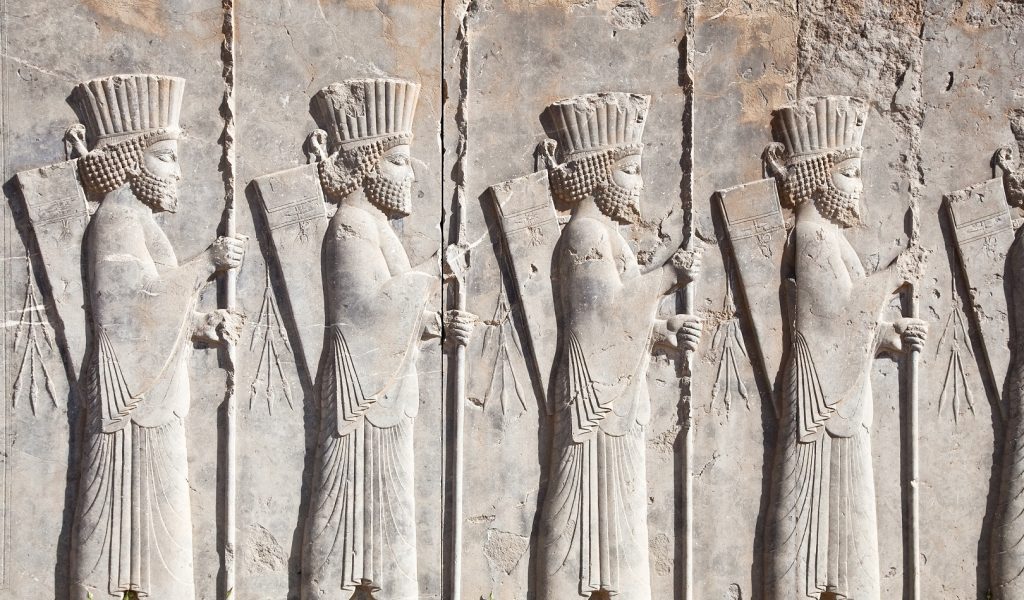
The Persian concept and practice of governance and public administration have been vital in shaping our modern understanding of state, government, and bureaucracy.
Ruling over a vast territory, the Persians required a highly effective system of governance that would enable them to maintain control over their far-reaching empire. Drawing inspiration from the Median’s theory of the state, the Persians created the world’s first state empire.
Through a network of complex mechanisms, they were able to implement an elaborate governmental hierarchy that would meet all the administrative, military, judicial, and financial requirements of the empire. As a powerful institution, the Persian style of governance and bureaucracy became an effective tool in yielding centralized political and administrative control through a system of decentralized administration.
The Persian administration functioned effectively via a well-structured system of governance that was incomparable in size, function, and efficiency to any system of bureaucracy in the ancient world. Administrative and managerial procedures were enhanced through standardized laws, and a standard language ensured effective communication across various institutions.
To maintain the balance of power, the Persian Empire was divided into several provinces known as the Satrapy. Government affairs were divided in each Satrapy based on civic and military functions. A local governor known as the Satrap was responsible for overseeing administrative affairs such as tax collection, infrastructure maintenance, and safeguarding local religions and traditions. The Satrap had no access to royal troops, and Military and policing matters were referred to an army commander.
To avoid any local rebellions, the satrapies were subject to periodic inspections by royal auditors who reported directly to the king. This system of governance turned the Persian empire into a gigantic, well-oiled machine and enabled it to maintain its status as an ancient superpower for more than 12 centuries.
“Neither snow nor rain nor heat nor gloom of night stays these couriers from the swift completion of their appointed rounds”
The above quote is the informal motto of the American Postal Service. It was inspired by a passage from Herodotus describing the elaborate courier system of the ancient Persian Empire. The idea of an elaborate messenger system grew from the political and military needs of the empire.
For the Satrapies to operate effectively, it was important for royal decrees and mandates to travel rapidly and safely across the extensive empire. A complex network of roads was built and reorganized to achieve this, and the foundations for a sophisticated courier system were laid.
The Persian’s elaborate communication system, known as the Chaparkhaneh, became the world’s first postal system. Countless stations were built along the winding roads, connecting the empire’s major cities. Most postal stations were situated on the famous Royal Road – a 2,699 km long highway stretching from Susa in Southern Iran to Sardis in Anatolia.
The royal road was integral to trade and communication in the Persian Empire. In addition to the courier stations, military checkpoints and Caravanserais were built to ensure safe overnight stays and travels through the busy highway. At each station, fresh horses and couriers were ready to receive new messages and pass them on to the messenger waiting at the next station. This allowed the news to travel across the Royal Road in just 9 days – a route that would otherwise take 90 days to finish on foot.
Persian art; a window into the intimately interconnected empire
Iran has a vibrant art heritage stretching back to 5,000 BCE. Drawing inspiration from their ancestors, neighbouring civilizations, and the multicultural status of the Empire, the Persians were able to create a unique artistic identity that would dominate and inspire Western Asia and beyond for over millennia.
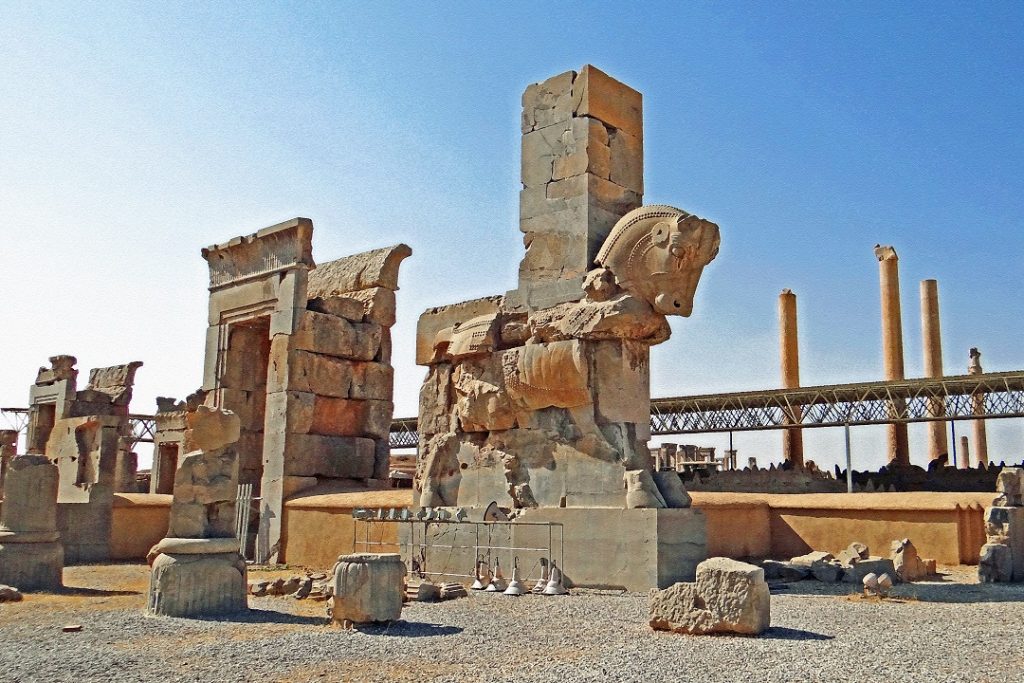
Persian art remains relatively unknown to much of the modern world despite its richness and authenticity. As a multi-ethnic empire, the rich cultural heritage of Persia is reflected through numerous art forms, from architecture, pottery, and jewellery-making, to ceramics, carpet weaving, and music. Persian art is mainly defined by its eclectic nature, cultural reflectiveness, and technical and artistic innovation.
Ancient Persian art flourished under two great dynasties: The Achaemenes and the Sassanid. The Achaemenes’ art focused primarily on stone and metal ornamentations, often decorated with floral motifs and animal imagery. The Achaemenes’ art and architecture are best represented in the ruins of Persepolis – the ceremonial capital of the Persian Empire. The delicate bas-reliefs depicting the various people of the Empire, fleets of Persian soldiers, and mythical creatures show the astonishing level of craftsmanship and attention to detail and form employed by Persian artists.
Having access to abundant sources of precious metals and stones, Persian artists came to master the art of jewellery-making and metalworking. The precious Oxus Treasure marvellously reflects the advanced metalworking skills of the Persians. This famous Achaemenes treasure trove is an extensive collection of 180 pieces of fascinating artefacts, including intricate pieces of jewellery, fine statues and figurines, elaborate bowls and jugs, and fine coins made out of gold and silver.
During this period, the Persians also came to master the art of garden design. Landscape gardening, as we know it today, is a legacy of the Persians. Inspired by man’s connection to nature, Cyrus created the first garden in his capital city of Pasargadae. With time gardens became an integral part of Persian architectural design, displaying the most significant characteristics of Persian art, including symmetry, balance, precision and attention to detail.
Ancient Persian art reached its height during the Sassanid dynasty. Sassanid artists had an extraordinary talent for integrating previous artistic traditions into new forms and styles. Like their predecessors, Sassanid artists drew heavily on Persian values of symmetry and balance. Domes and minarets became a predominant feature of this era’s architecture.

The use of decorative mosaics, frescos, and statues became more prevalent during the Sassanid period. The 6.7-meter-tall figure of Shapur I in Shapur’s cave is an impressive example of Sassanid’s art of sculpture making. The Sassanid also continued the Achaemenes’ tradition of stone reliefs, creating striking relics depicting Sassanid leaders and battle scenes.
Apart from animal and floral motifs, scenes of hunting, battles, and court life were also integrated to decorate a wide range of intricately made gold and silver dishware. In addition, other art forms, including music and carpet-making, peaked during this period.
Many artefacts have survived to this day that are excellent representations of the cultural and artistic legacy of the Persian Empire. You can experience the Persians’ unique approach to art and life through these valuable artefacts in famous museums across Iran, Europe and America. The National Museum of Iran is the central Persian art and culture hub. You can find elaborate Persepolis stone reliefs, the famous Shami Man Bronze statue, the gold Lion Rhyton, and countless other Persian treasures here.
Outside Iran, the Louvre houses one of the most significant collections of Persian artworks, including the famous “Frieze of Archers” – a collection of finely enamelled bricks depicting royal archers. The British Museum is also home to some of the most precious Persian artefacts, notably the Cyrus Cylinder and the Oxus Treasure. The Metropolitan Museum of Art houses some of Persia’s most delicately decorated gold bowls, drinking vessels, stone relics, and cuneiform tablets.

